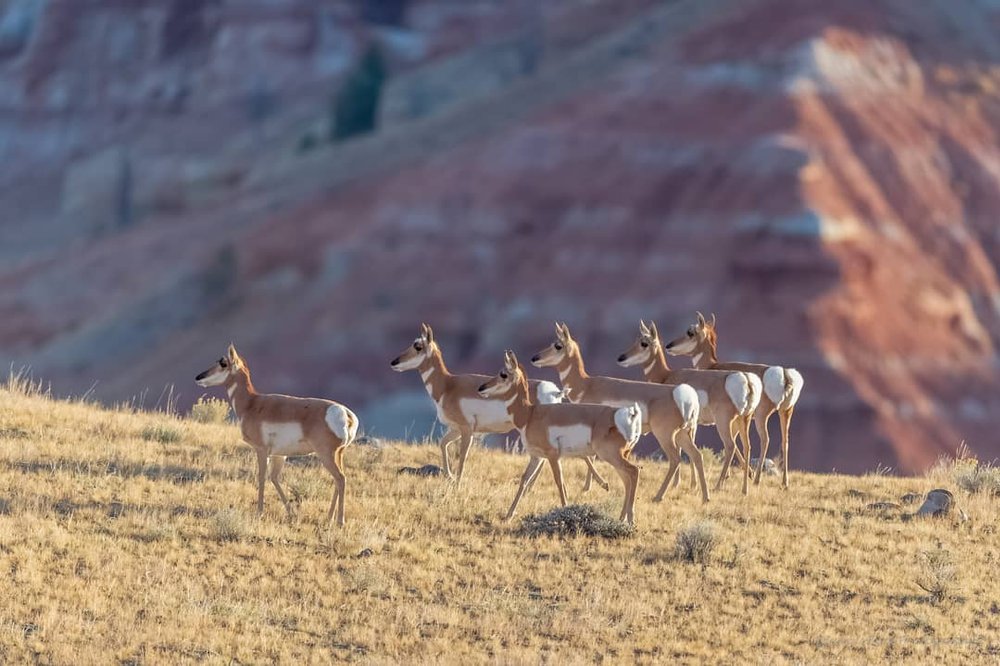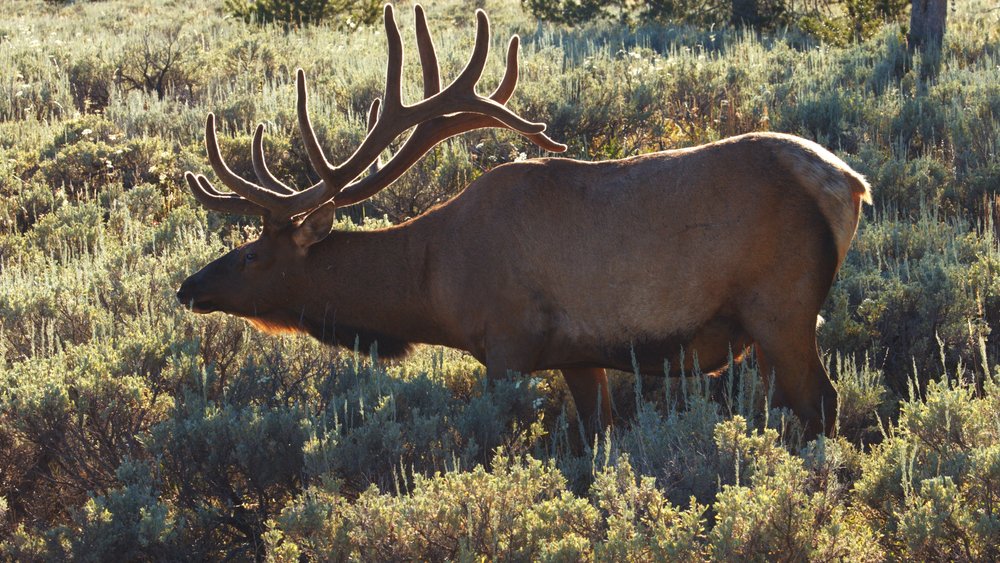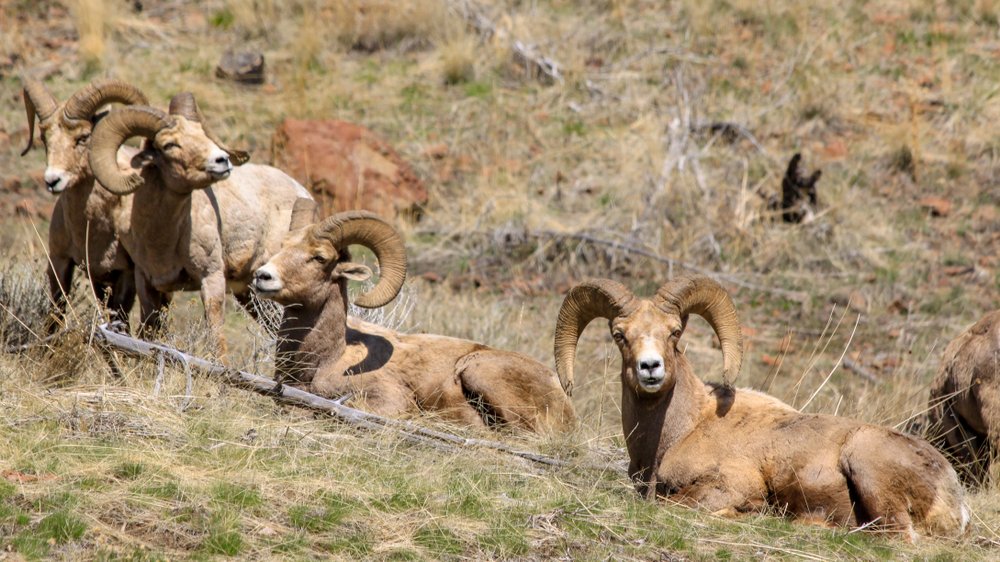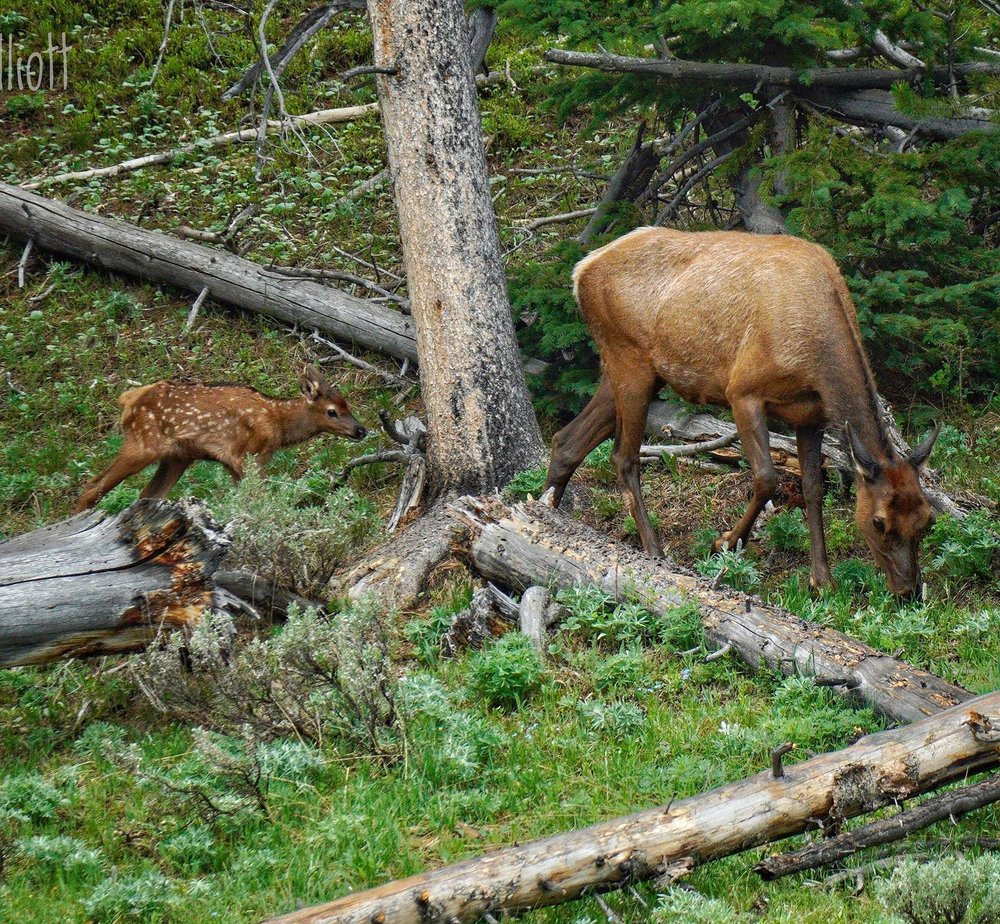This article was written with guidance from the Wyoming Game & Fish Department.
Flocking to rising rivers, fresh snow or golden leaves is second nature to those of us seeking the perfect thrill for each season. But we aren’t the only ones who travel when the winds start to shift. Wyoming wildlife, including large ungulates such as elk, bighorn sheep, mule deer and pronghorn are just a few of the animals known to traverse the state each spring and fall in search of fresh flora.
In autumn these animals travel to lower elevation to access shrubs, grass and other plants that become sparse with incoming snow. Once the snow begins to melt and plants start to re-emerge in higher elevation, animals return to more mountainous regions.
Migrating is a learned behavior that helps animals who rely on vegetation as a food source survive in harsh climates. During migrations animals can travel up to 150 miles to reach their home for the summer or winter, taking time to meander and forage along the way. Wyoming’s low population and open landscapes provide excellent conditions for migrating animals, with state, federally protected and private lands all playing vital roles in the migration process.
The migration routes of ungulates (hoofed animals like elk and pronghorn) in Wyoming are among the longest routes in North America. While many of these paths travel through remote parts of the state, you can catch a glimpse of migrating animals in more accessible parts of Wyoming, as well. Consider visiting these areas to see migrating wildlife along their natural routes.
Pronghorn: Rock Springs to Pinedale

Pronghorn, also known as antelope, can be found migrating between Rock Springs and Pinedale. Each spring, 300 to 400 pronghorn travel from Wyoming’s Red Desert near Rock Springs up to Grand Teton National Park, passing through Pinedale along the way. This is such an important route that wildlife overpass bridges were built over U.S. 191, the highway that travels between these two towns. The Trapper’s Point wildlife overpass in Pinedale features a web cam for anyone who wants to keep a close eye on this migration corridor.
Elk: Jackson, Grand Teton National Park, Yellowstone National Park

Elk can most commonly be found in the Greater Yellowstone Ecosystem in northwest Wyoming, which is the summer destination for thousands of these animals. Many of Wyoming’s elk migrate to Yellowstone from the National Elk Refuge in Jackson. This refuge plays a key role as the winter range for these herds.
Bighorn Sheep: Cody to North & South Fork

In the spring bighorn sheep can be seen near Cody and within the Shoshone National Forest. Herds make their way west near the Buffalo Bill Scenic Byway as they travel toward Yellowstone and Grand Teton National Park. Other herds can be found in northern Wyoming near Bighorn National Forest and in southeast Wyoming near the Laramie Mountains.During the fall these ungulates can be seen in rut near Dubois. To learn more about Wyoming bighorn sheep or book a wildlife tour or learn where to take the best self-guided tours, be sure to visit the National Bighorn Sheep Center.
Mule Deer: Rock Springs to Jackson

Mule deer migration in Wyoming is similar to that of the pronghorn. In the spring thousands of mule deer migrate from the Red Desert near Rock Springs up toward Hoback Basin south of Jackson. At 150 miles, this Wyoming route is the longest mule deer migration on record. To help keep this journey safe, mule deer are herded underneath the highway at the Nugget Canyon section of U.S. 30 near Kemmerer using game fence and a concrete crossing structure.
When watching for wildlife, dawn and dusk are the most active times of day. Keep this in mind when driving along Wyoming’s open roads, as well; wildlife crossings are prevalent throughout the state. Remember to always keep a safe distance when viewing Wyoming’s natural residents, meaning you should stay 25 to 100 yards away from any animal. Wildlife is wild, after all, and can be dangerous if provoked (yes, even herbivores!).
If you are interested in learning more about wildlife migrations in Wyoming, visit migrationinitiative.org.
Photos courtesy Wyoming Game & Fish Department.